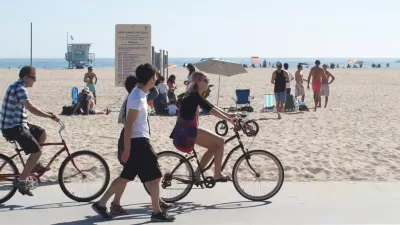Faced with the dire consequences of a one-two punch of aging populations and declining birthrates, one writer has suggestions for how policy can help ensure a better future.

Ian Goldin, professor of globalization and development at Oxford university and the author of Rescue: From Global Crisis to a Better World, writes for the Financial Times [paywall] about the need to set policy that anticipates gaining population.
The data shared in the article is revealing. For example, there are more people over 65 than under 5 for the first time in recorded history. While some of the aging population can be attributed to improving public health and medicine, much more drastic in its effect are the declining fertility rates found all over the world, according to Goldin. More than half the countries in the world are currently reproducing below the replacement rate needed to maintain a stable or growing population. More countries will join that number in the coming years and decades.
But far from a prediction of doom and gloom, Goldin is presenting these demographic realities as a preface to suggesting policy strategies that can respond to aging populations and declining fertility rates. Among his suggestions for “stable and sustainable societies” in the future, Goldin recommends converting some of the increasing savings of older cohorts into long-term investments. The world’s shifting demographics “means greater attention must be paid to improving health, extending working lives, accepting more migrants, increasing productivity and growing savings,” writes Goldin.
A lot more details on the demographic trends likely to shift the economics and politics of the world are included in the source article below. Previous Planetizen coverage of the emerging trend of declining population can also be found below.
- Census: U.S. Population Growing Slower Than Any Point Since the Nation's Founding (Planetizen, December 2021)
- World Population Projected to Decline by 2065 (Planetizen, July 2020)
FULL STORY: Demography is not destiny

Maui's Vacation Rental Debate Turns Ugly
Verbal attacks, misinformation campaigns and fistfights plague a high-stakes debate to convert thousands of vacation rentals into long-term housing.

Planetizen Federal Action Tracker
A weekly monitor of how Trump’s orders and actions are impacting planners and planning in America.

In Urban Planning, AI Prompting Could be the New Design Thinking
Creativity has long been key to great urban design. What if we see AI as our new creative partner?

King County Supportive Housing Program Offers Hope for Unhoused Residents
The county is taking a ‘Housing First’ approach that prioritizes getting people into housing, then offering wraparound supportive services.

Researchers Use AI to Get Clearer Picture of US Housing
Analysts are using artificial intelligence to supercharge their research by allowing them to comb through data faster. Though these AI tools can be error prone, they save time and housing researchers are optimistic about the future.

Making Shared Micromobility More Inclusive
Cities and shared mobility system operators can do more to include people with disabilities in planning and operations, per a new report.
Urban Design for Planners 1: Software Tools
This six-course series explores essential urban design concepts using open source software and equips planners with the tools they need to participate fully in the urban design process.
Planning for Universal Design
Learn the tools for implementing Universal Design in planning regulations.
planning NEXT
Appalachian Highlands Housing Partners
Mpact (founded as Rail~Volution)
City of Camden Redevelopment Agency
City of Astoria
City of Portland
City of Laramie





























